Blog
The Top Brazilian Clubs: Understanding Brazilian’s Football
- Thursday January 30th, 2020
- Posted by: Amanda Ennes
- Category: Brazil
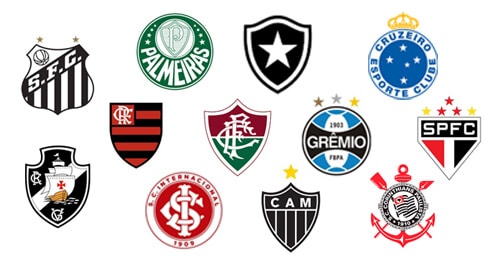
In Brazil, there’s a group of 12 football teams called the Big Twelve. This group is made of Brazilian clubs that won most championships and tournaments, being the most popular and successful clubs in Brazil.

First of all, we need to understand a bit better about the Brazilian passion for Football. Even though England invented football, there is a very popular saying in Brazil, in which we refer to our motherland as the “country of football” (país do futebol).
Brazil is the only team to be part of every World Cup competition ever held. It is also the only nation to ever win the World Cup five times. Most people consider Pelé, a Brazilian football player, the best football player of all-time — FIFA elected Pelé Player of the Century during a ceremony in 2000. These all help when comes to the matter of Brazilians being crazy about football.
After the 1950 FIFA World Cup, the media started to cover football more, praising the idols and publicizing games and championships. Also during the ’50s, Brazil was going through a great economic phase and the government built lots of football fields around the country. During the ’90s, Brazilian players started not only to play overseas but were a huge success, especially in Europe.
Today, it is impossible to separate football from the Brazilian culture. Brazilians don’t discuss football only during the 90-minute game but it is a topic of conversation for friends, family, and the media all year long. Football itself is responsible for social, political, cultural, and economic implications all over the country.
Let’s learn a bit more about the Big Twelve, the biggest Brazilian Clubs:
Table of Contents
ToggleBrazilian Clubs
Altético Mineiro
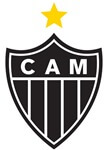 Founded in 1908, Atlético Mineiro is the oldest active football club in the state of Minas Gerais. They have won 44 state championships between 1915 and 2017; two national championships (Campeonato Brasileiro in 1971 and Copa do Brasil in 2014); and one CONMEBOL Libertadores in 2013. Atlético uses the colors black and white for their uniforms and logo. Also, their mascot is a rooster, which the club is often referred to as such. According to Atlético Mineiro’s website, the club has more than 9 million supporters around Brazil.
Founded in 1908, Atlético Mineiro is the oldest active football club in the state of Minas Gerais. They have won 44 state championships between 1915 and 2017; two national championships (Campeonato Brasileiro in 1971 and Copa do Brasil in 2014); and one CONMEBOL Libertadores in 2013. Atlético uses the colors black and white for their uniforms and logo. Also, their mascot is a rooster, which the club is often referred to as such. According to Atlético Mineiro’s website, the club has more than 9 million supporters around Brazil.
Botafogo
 Botafogo is one of the Brazilian clubs from Rio de Janeiro. It is often referred to as the Lonely Star, because of its logo, and ‘o Glorioso‘ (‘the glorious’) because of the success of yore. The club was founded in 1894 as a rowing team. However, the first football team was put together in 1904. Botafogo won its first state championship in 1907 and 18 others after that. Botafogo also won 2 national championships, in 1968 and 1995. The colors black and white represent the club and their mascot is ‘Manequinho‘, a little boy. Botafogo’s biggest idol was Garrincha, who played for the club from 1953 until 1965.
Botafogo is one of the Brazilian clubs from Rio de Janeiro. It is often referred to as the Lonely Star, because of its logo, and ‘o Glorioso‘ (‘the glorious’) because of the success of yore. The club was founded in 1894 as a rowing team. However, the first football team was put together in 1904. Botafogo won its first state championship in 1907 and 18 others after that. Botafogo also won 2 national championships, in 1968 and 1995. The colors black and white represent the club and their mascot is ‘Manequinho‘, a little boy. Botafogo’s biggest idol was Garrincha, who played for the club from 1953 until 1965.
Corinthians
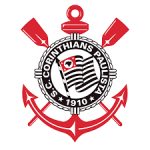 In 1910 a group of workers from São Paulo founded Sport Club Corinthians Paulista. Supporters and the media also call the club ‘Timão‘ (‘big team’). The club won 36 state championships between 1914 and 2019; ten national championships; one CONMEBOL Libertadores in 2012; and two FIFA Club World Cups in 2000 and 2012. According to the Brazilian Institute of Geography and Statistics, Corinthians has 29 million supporters in Brazil, being one of the biggest Brazilian clubs in number of fans. Corinthian’s mascot is a musketeer.
In 1910 a group of workers from São Paulo founded Sport Club Corinthians Paulista. Supporters and the media also call the club ‘Timão‘ (‘big team’). The club won 36 state championships between 1914 and 2019; ten national championships; one CONMEBOL Libertadores in 2012; and two FIFA Club World Cups in 2000 and 2012. According to the Brazilian Institute of Geography and Statistics, Corinthians has 29 million supporters in Brazil, being one of the biggest Brazilian clubs in number of fans. Corinthian’s mascot is a musketeer.
Cruzeiro
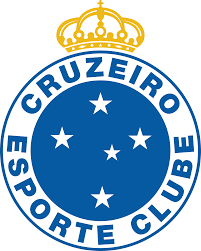 Cruzeiro is another club coming from the state of Minas Gerais. Their first match took place in 1921. By then, the club used to compete under the name Società Sportiva Palestra Italia. Their mascot is the fox and the club’s color is blue. Cruzeiro and Atlético Mineiro are longtime rivals, being the biggest clubs of Minas Gerais. Cruzeiro won several championships during the years, including 38 state championships, 10 national championships (four Campeonatos Brasileiros and six Copas do Brasil) and two CONMEBOL Libertadores, in 1976 and 1997. Footballer Ronaldo Fenômeno started his professional career playing for Cruzeiro in 1993.
Cruzeiro is another club coming from the state of Minas Gerais. Their first match took place in 1921. By then, the club used to compete under the name Società Sportiva Palestra Italia. Their mascot is the fox and the club’s color is blue. Cruzeiro and Atlético Mineiro are longtime rivals, being the biggest clubs of Minas Gerais. Cruzeiro won several championships during the years, including 38 state championships, 10 national championships (four Campeonatos Brasileiros and six Copas do Brasil) and two CONMEBOL Libertadores, in 1976 and 1997. Footballer Ronaldo Fenômeno started his professional career playing for Cruzeiro in 1993.
Flamengo
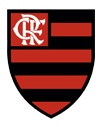 Not only the club with the most supporters in Brazil, but Flamengo also has the biggest fan base in the world — 33 million supporters, according to FIFA. Based in Rio de Janeiro, they are also the richest football club in Brazil. Just like Botafogo, Flamengo initiated his history as a rowing club in 1895. Eventually, the official football team started playing in 1912. Flamengo’s mascot is the vulture and its colors are red and black, usually presented in stipes. Flamengo won 35 state championships between 1914 and 2019; nine national championships (six Campeonatos Brasileiros and three Copas do Brasil); and two CONMEBOL Libertadores in 1981 and 2019. Flamengo’s biggest idol and most famous football player is Zico.
Not only the club with the most supporters in Brazil, but Flamengo also has the biggest fan base in the world — 33 million supporters, according to FIFA. Based in Rio de Janeiro, they are also the richest football club in Brazil. Just like Botafogo, Flamengo initiated his history as a rowing club in 1895. Eventually, the official football team started playing in 1912. Flamengo’s mascot is the vulture and its colors are red and black, usually presented in stipes. Flamengo won 35 state championships between 1914 and 2019; nine national championships (six Campeonatos Brasileiros and three Copas do Brasil); and two CONMEBOL Libertadores in 1981 and 2019. Flamengo’s biggest idol and most famous football player is Zico.
Fluminense
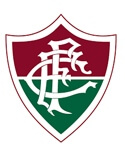 Fluminense is the oldest football club in Rio de Janeiro, founded in 1902. Their three colors, green, white, and dark red, are a big representation of the club. Fluminense and Flamengo are responsible for the biggest rivalry matches in Rio de Janeiro. Their matches are called Fla-Flu. Fluminense has won 31 state championships and five national titles (Campeonato Brasileiro in 1970, 1984, 2010, and 2012 and Copa do Brasil in 2007). The word ‘fluminense‘ in Portuguese is a demonym for people that are born in the State of Rio de Janeiro.
Fluminense is the oldest football club in Rio de Janeiro, founded in 1902. Their three colors, green, white, and dark red, are a big representation of the club. Fluminense and Flamengo are responsible for the biggest rivalry matches in Rio de Janeiro. Their matches are called Fla-Flu. Fluminense has won 31 state championships and five national titles (Campeonato Brasileiro in 1970, 1984, 2010, and 2012 and Copa do Brasil in 2007). The word ‘fluminense‘ in Portuguese is a demonym for people that are born in the State of Rio de Janeiro.
Grêmio
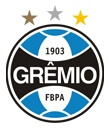 Grêmio is a Brazilian professional football club based in the state of Rio Grande do Sul, in the south of Brazil. Its rivalry with Internacional is considered one of the most heated in the world, and the matches are known as ‘Grenal’. Grêmio won 38 state championships between 1921 and 2019; seven national championships and three CONMEBOL Libertadores. The club was founded in 1903. Its colors are blue, white and black and its mascot is the musketeer, just like Corinthians in São Paulo. Renato Gaúcho is Gremio’s biggest idol, he played for the club from 1982 until 1987. He is the current head coach for the club.
Grêmio is a Brazilian professional football club based in the state of Rio Grande do Sul, in the south of Brazil. Its rivalry with Internacional is considered one of the most heated in the world, and the matches are known as ‘Grenal’. Grêmio won 38 state championships between 1921 and 2019; seven national championships and three CONMEBOL Libertadores. The club was founded in 1903. Its colors are blue, white and black and its mascot is the musketeer, just like Corinthians in São Paulo. Renato Gaúcho is Gremio’s biggest idol, he played for the club from 1982 until 1987. He is the current head coach for the club.
Internacional
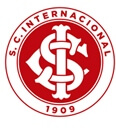 The Poppe brothers founded Sport Club Internacional in Rio Grande do Sul in 1909. Internacional’s supporters call the club ‘Colorado‘, in reference to their red color. During the ’70s, Internacional won the state championship eight times in a row and won the national championship in 1979 without losing a single game. Because of this, their fanbase calls this era ‘the golden decade’. Internacional’ titles include 45 state championships; 4 national championships; two CONMEBOL Libertadores and a FIFA Club World Cups in 2006. The media considers Internacional one of the most successful Brazilian clubs in recent years.
The Poppe brothers founded Sport Club Internacional in Rio Grande do Sul in 1909. Internacional’s supporters call the club ‘Colorado‘, in reference to their red color. During the ’70s, Internacional won the state championship eight times in a row and won the national championship in 1979 without losing a single game. Because of this, their fanbase calls this era ‘the golden decade’. Internacional’ titles include 45 state championships; 4 national championships; two CONMEBOL Libertadores and a FIFA Club World Cups in 2006. The media considers Internacional one of the most successful Brazilian clubs in recent years.
Palmeiras
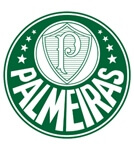 Palmeiras was founded in São Paulo in 1914 as Palestra Italia but changed the official name to Sociedade Esportiva Palmeiras in 1942. Its colors are green and white. Palmeiras has a great rivalry with Corinthians, even serving as a plot for the Brazilian movie Romeo and Juliet Get Married. Among the championships Palmeiras holds are 22 state championships, 13 national championships, and one CONMEBOL Libertadores.
Palmeiras was founded in São Paulo in 1914 as Palestra Italia but changed the official name to Sociedade Esportiva Palmeiras in 1942. Its colors are green and white. Palmeiras has a great rivalry with Corinthians, even serving as a plot for the Brazilian movie Romeo and Juliet Get Married. Among the championships Palmeiras holds are 22 state championships, 13 national championships, and one CONMEBOL Libertadores.
Santos
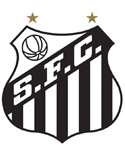 Santos is well-known for discovering worldwide famous football players, such as Neymar, Robinho, and Pelé — the last one considered the Athlete of the Century. Founded in 1912, Santos plays in State of São Paulo’s premier league. The club is also known as ‘peixe‘ (fish), because of its mascot. In the year 2000, FIFA elected Santos the 5th biggest football club in the 20th century. Santos won 22 state championships, 9 national championships (eight Campeonatos Brasileiros and one Copa do Brasil), and three CONMEBOL Libertadores, the last one in 2011.
Santos is well-known for discovering worldwide famous football players, such as Neymar, Robinho, and Pelé — the last one considered the Athlete of the Century. Founded in 1912, Santos plays in State of São Paulo’s premier league. The club is also known as ‘peixe‘ (fish), because of its mascot. In the year 2000, FIFA elected Santos the 5th biggest football club in the 20th century. Santos won 22 state championships, 9 national championships (eight Campeonatos Brasileiros and one Copa do Brasil), and three CONMEBOL Libertadores, the last one in 2011.
São Paulo
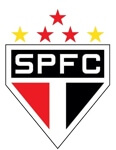 São Paulo is the most successful club in Brazil in terms of international titles, they have 12 of them between FIFA Club World Cups and continental championships. The club also won the state championship three times in a row on six different occasions. Founded in 1930, São Paulo is a relatively young club compared to the traditional Brazilian clubs. But even so, São Paulo won 21 state championships, 6 national championships, three CONMEBOL Libertadores and one FIFA Club World Cup. Saint Paul is the club’s mascot.
São Paulo is the most successful club in Brazil in terms of international titles, they have 12 of them between FIFA Club World Cups and continental championships. The club also won the state championship three times in a row on six different occasions. Founded in 1930, São Paulo is a relatively young club compared to the traditional Brazilian clubs. But even so, São Paulo won 21 state championships, 6 national championships, three CONMEBOL Libertadores and one FIFA Club World Cup. Saint Paul is the club’s mascot.
Vasco
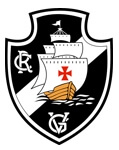 Portuguese immigrants founded Club de Regatas Vasco da Gama in 1898. Initially, the club competed in rowing, but in 1915 Vasco implemented the football department. The Portuguese community in Rio de Janeiro is still a strong fanbase for Vasco nowadays. The Cross pattée represented in Vasco’s logo is a huge part of the club. Vasco won 24 state championships and 5 national championships (Campeonato Brasileiro in 1974, 1989, 1997, and 2000, and Copa do Brasil in 2011).
Portuguese immigrants founded Club de Regatas Vasco da Gama in 1898. Initially, the club competed in rowing, but in 1915 Vasco implemented the football department. The Portuguese community in Rio de Janeiro is still a strong fanbase for Vasco nowadays. The Cross pattée represented in Vasco’s logo is a huge part of the club. Vasco won 24 state championships and 5 national championships (Campeonato Brasileiro in 1974, 1989, 1997, and 2000, and Copa do Brasil in 2011).
Portuguese course in Brazil with Caminhos Language Centre. Study Brazilian Portuguese in Rio de Janeiro and experience the best Rio has to offer.


 Deutsch
Deutsch Français
Français Português
Português Español
Español

“Corinthians 36 estaduales”
error son 30
“Palmeiras 13 nacionales” error son 15
San Pablo ha ganado 3 mundiales y és el unuco a ganar 3 campeonatos nacionales seguidos.